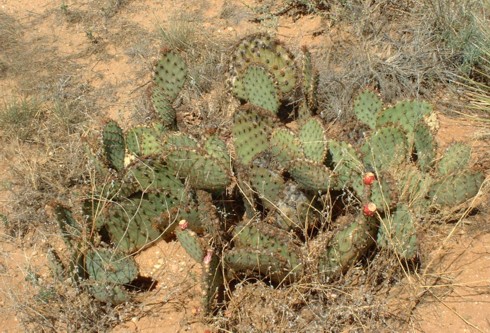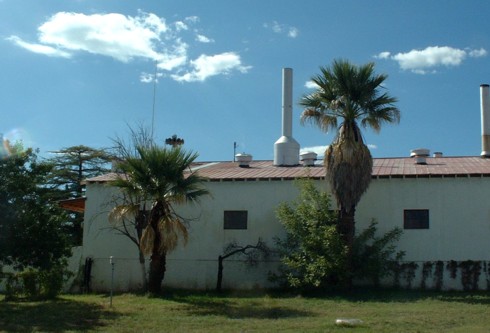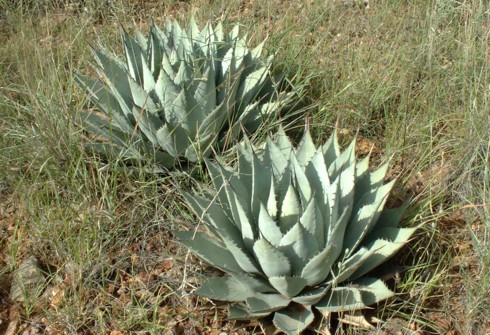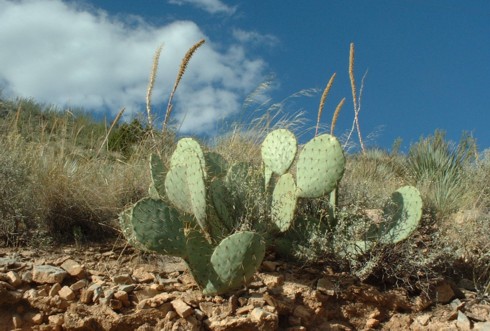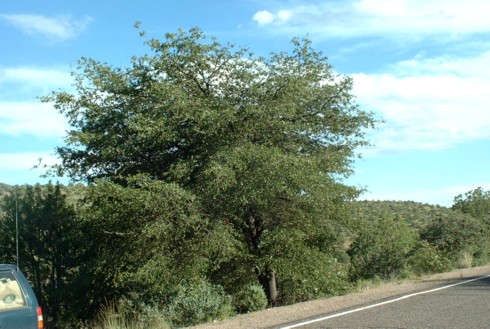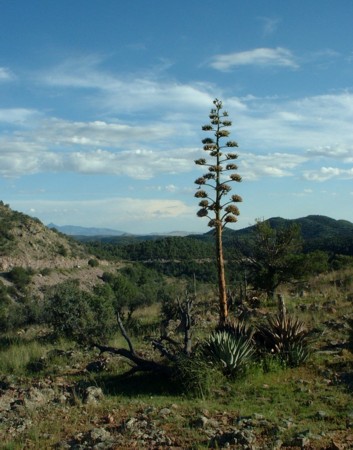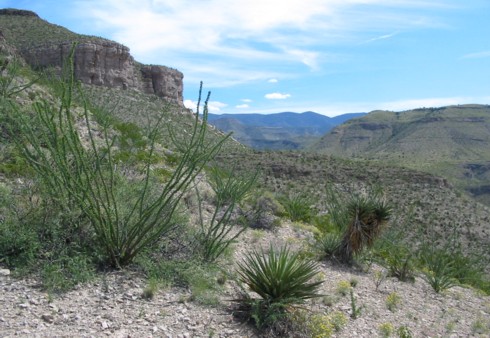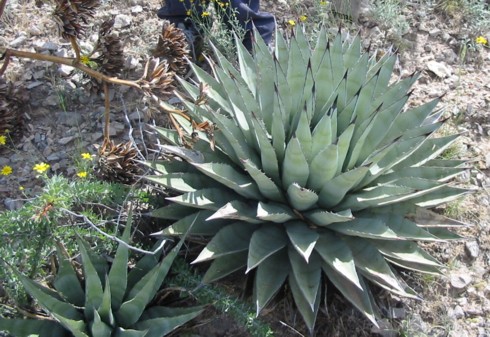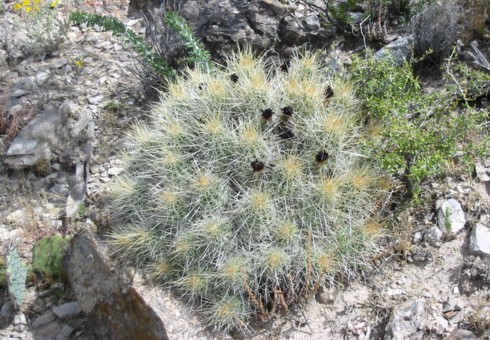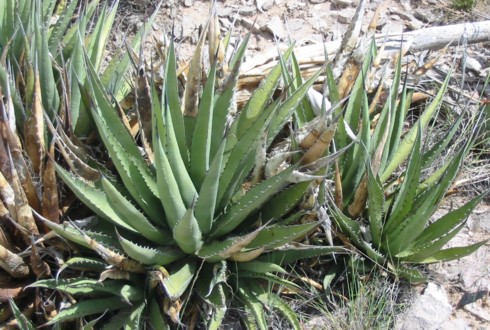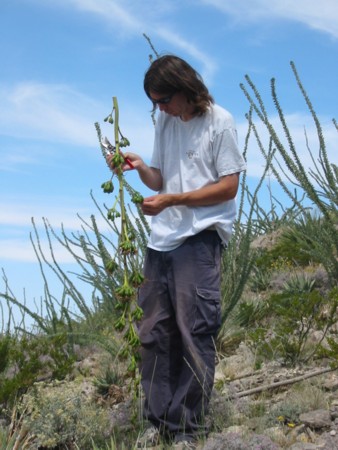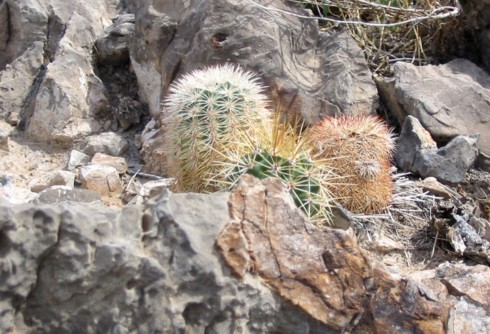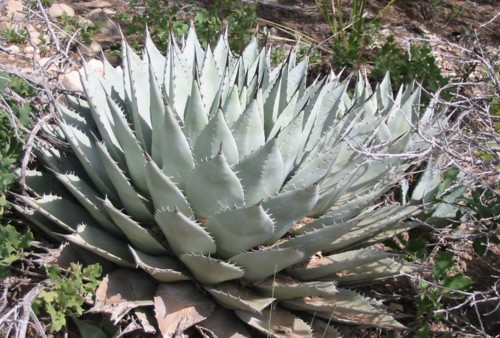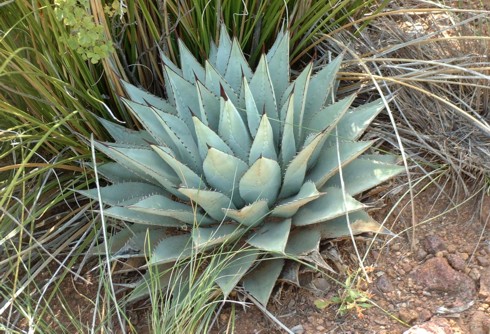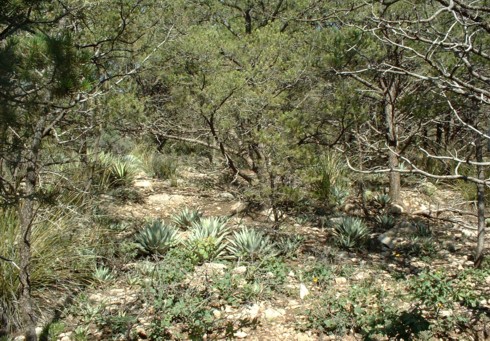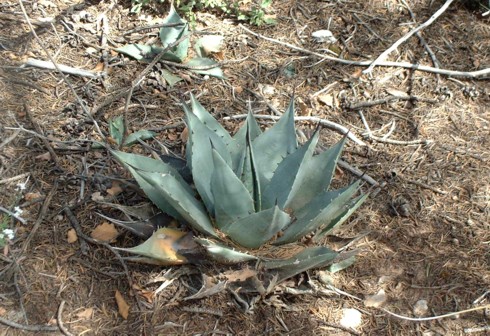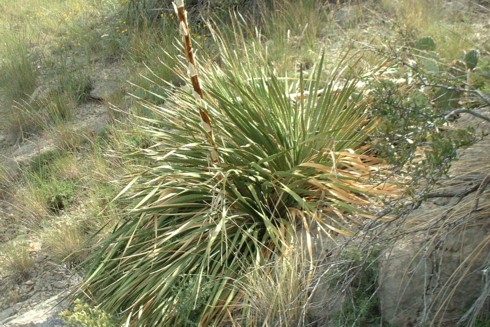|
Page 7 - New Mexico
The Opuntias got increasingly interesting after I crossed into New Mexico. I'm not sure what to call this one.
The drive between Lordsburg and Silver City is cool; in a few areas I passed through a "forest" of Yucca elata. Nolina microcarpa was also ubiquitous.
Yucca elata north of Fort Bayard. This species is native all the way from western Arizona to Texas, but it seems to look best in parts of the Southwest that are a little cooler and receive more summer rain. Around Silver City it grows up to about 6,500'. I got some seeds from this area; they should be a good hardy form.
Washingtonia filifera in Fort Bayard. These palms are growing about at the limit of their cold hardiness, and I was rather surprised to see them this high up (6,000'). It doesn't look like they get a lot of care.
Agave parryi is common throughout the southern Gila National Forest. Here, just west of Mimbres Valley, I found a nice form that looks a lot like A. neomexicana.
This was an exciting find - Ocotillo (Fouquieria splendens) at 6,900' west of Mimbres Valley! This is the coldest and wettest area that I have seen it in the wild. Apparently I drove right past them last December. Of course I collected some cuttings, but I have never gotten Ocotillo to root from cuttings yet (in fact I think the cuttings are already dead as I write this - oh well). More Dasylirion wheeleri here as well.
A nice form of Opuntia engelmanii in that same area.
Quercus emoryi is another nice evergreen oak, and very cold hardy. I saw it all the way from Prescott over to Mimbres, but the acorns ripen very early so I didn't find any.
I made a long anticipated return to the place where a gigantic form of A. parryi grows west of Emory Pass, that I absent-mindedly forgot to photograph when I was here last December. These whopper rosettes up to 4' across, and at 7,050' altitude, are truly one of the botanical wonders of the Southwest. And a nice form of Opuntia spinosior grows here too.
A giant A. parryi seed stalk.... before I chopped it! As the daylight was waning I drove over Emory Pass. Just below the west side of the pass, I found some small, shrubby plants of Q. hypoleucoides.... and finally, some of them with acorns! There were a lot of acorns that had just fallen on the ground and appeared to be viable. I collected a lot of them - I hope they grow!! That night I enjoyed the hospitality of the venerable Steve Smullen and family in Las Cruces. The following day Steve and I drove up to the Sacramento Mountains to look for more cool plants. I was hoping to find a high altitude form of Agave neomexicana, and it was great to have some company on part of the trip. We first drove up to the head of a canyon immediately east of Alamogordo, and climbed up the hillside to about 5,000'.
This was the land of Ocotillo and Yucca torreyi. Photo by Steve Smullen, whose camera takes better pictures than mine.
I spotted the flower stalks of these A. neomexicana through Steve's binoculars (another thing I should have brought - oops). They appeared to have flowered so early in the season that few seeds were left. However after collecting about 10 inflorescences I got an adequate amount of seed. Some of the plants had super spines! Photo by Steve Smullen.
We found some very nice plants of Echinocereus stramineus (good thing someone was there to identify all those cacti for me!). Photo by Steve.
This was an exciting find: a single plant of Agave gracilipes in amongst the A. neomexicana. According to Gentry, this species avoids mixing its genes with A. neomexicana because it flowers so much later. This is a very northerly occurence for this species, and far away from A. lechuguilla, to which it is related. Also, this form is quite different than the one I found in the Guadalupe Mountains last year, being more compact and spiny. Photo by Steve.
Some rambunctious young hipster cleaning the seeds of Agave gracilipes. These were not quite ripe but I figured I'd better get them while I was there, and they seem to have ripened reasonably well since I collected them. Photo by Steve.
There was quite a diversity of cacti on this mountain. These are probably Echinocereus dasyacanthus and E. coccineus. The dead one would be right at home in my collection... ha ha. Photo by Steve.
A huge specimen of Echinocactus horizonthalonius, blue barrel. Photo by Steve.
A super-spiny Opuntia macrocentra with a bizarre "3-way" pad. Photo by Steve, even though he thinks Opuntias are mundane, everyday plants. The next part of our quest for the day was to drive up towards the High Rolls/Mountain Park area and look for higher altitude forms of Agave neomexicana, Dasylirion wheeleri and whatever else we might find. This was also very successful. Another good find was a high altitude form of Opuntia macrocentra.
Beautiful icy-silver Agave neomexicana plants at 7,600'! Photo by Steve.
Agave neomexicana with Nolina microcarpa. As usual, each plant was just a little different but they all had very nice teeth.
Agaves growing in pine and gambel oak forest at 7,600'. This is only 1,000' lower than the base of Cloudcroft Ski Area just a few miles to the east.
Some of the plants growing in the shade of trees might take years to mature, if they ever do. Of the many plants we found, only one had a bloom stalk with seeds on it. That was all I needed of course, but it is surprising more had not bloomed this year - they must grow VERY slowly at that altitude!
A greenish Dasylirion at about 6,000' in the Sacramento Mountains. Despite the green color this is still D. wheeleri, I believe. |
